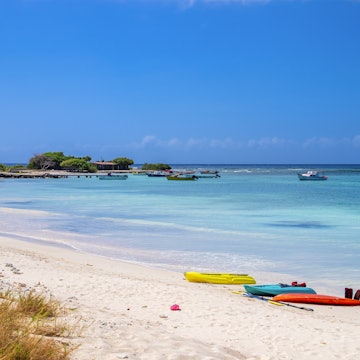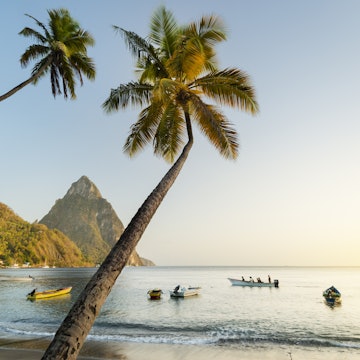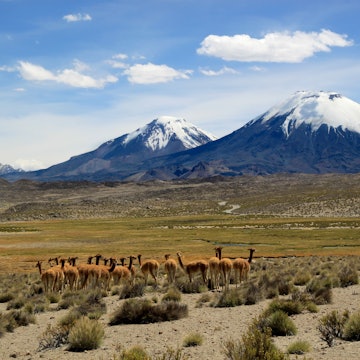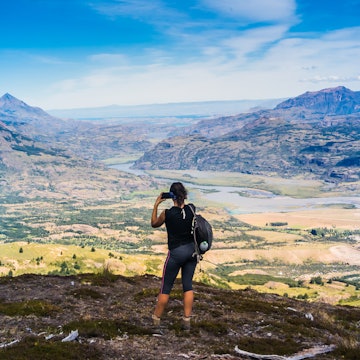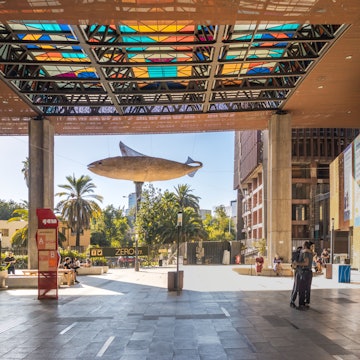
Chile or Argentina: deciding between two South American playgrounds



Chile’s spectacular Atacama Desert, or Argentina’s roaring Igazú Falls? © iStock
As you follow the snow-capped peaks descending from high desert to windy Patagonian moors, Chile and Argentina unfurl on either side of the Andes. Each country offers incredible adventures, unbeatable cuisine and so much more. Two Lonely Planet writers make a case for each, offering travel tips only a veteran traveler could know.

Chile is a total eclipse of the heart
The author of dozens of Lonely Planet books, Kerry Walker first traveled to Chile 20 years ago and was immediately smitten by its sky-high Andes, puffing volcanoes, glaciers, fjords and surf-smashed Pacific coast.
I remember drawing breath as the moon crept across the sun, blotting out all light, baring a ring of fire. I had touched down in Santiago just in time for the annular solar eclipse in May 2003. and had barely touched Chilean soil by the time I was peering up at the sky as the world momentarily darkened. It was a dramatic introduction to a country that has held me in its thrall ever since.
Extending a slender leg between the Pacific Ocean and the snow-frosted Andes, Chile is the world’s longest and skinniest country from north to south. Back then, I rocked up with a backpack, a well-thumbed guidebook, an open-ended ticket and a burning desire to see everything South America could offer. A fistful of pesos bought me an empanada, a night in a bare-bones hostel and a front-row view of the Andes.
The country gave me lots of firsts: Glacier hikes and volcano climbs. Pisco sours and penguins in the wild. Altitude sickness (in the Andes) and seasickness (in Patagonia). Chile was my first South American love – and the springboard for a lifetime of adventure.
Argentina is much hyped, a country that shouts as gustily as a boleadora-wielding gaucho (referring to a weapon outfitted with cords and weights cowboys use to entangle animals) about its charms: football, tango, juicy steaks and sizzling Buenos Aires. Sí, sí, we know. But Chile? Unless you’ve been there, it’s an unopened book.

Carrying itself with quiet confidence, Chile keeps its mystique intact. Its cities are as elegant as those in Argentina, its people as passionate, its nevados (snowy mountains) as entrancing, its wine as globally feted. And the Indigenous culture of the Mapuche in La Araucanía is more deeply rooted and tangible than anything you’ll find in Argentina. Chile has mummies far older than those in Egypt – in the Azapa Valley, near Arica – but you’ve probably never heard of them. Chile just isn’t a bragger.
Extending for almost 2700 miles (4345km) from top to toe, Chile is wildly diverse in climate and geography. In the space of a couple of weeks, you can sand-board epic dunes in the driest place on Earth (the remote, otherworldly Atacama Desert), then eye up the highest peaks of snow-frosted mountains. Surf Pacific breaks, hike volcanoes, boat across fjords, bubble in hot springs and walk on glaciers that ripple into infinity.
Magic moments? Too many to count. But I’ll never forget traveling over the llama-filled altiplano to San Pedro de Atacama to bike across the sun-scorched, moonlike desert of Valle de la Luna. Its no-filter-required rusty rock formations, dunes and psychedelic sunsets are like nothing you’ve ever seen before – or will ever see again. Adobe villages, flawless blue skies, topaz lagoons fizzing with pink flamingos, snow-frosted volcanoes, ear-popping mountains approaching 20,000ft (6000m) and night skies glittering with a galaxy of stars (Norte Grande is one of the world’s celestial hotspots): Chile had me right there.
But I didn’t stop.
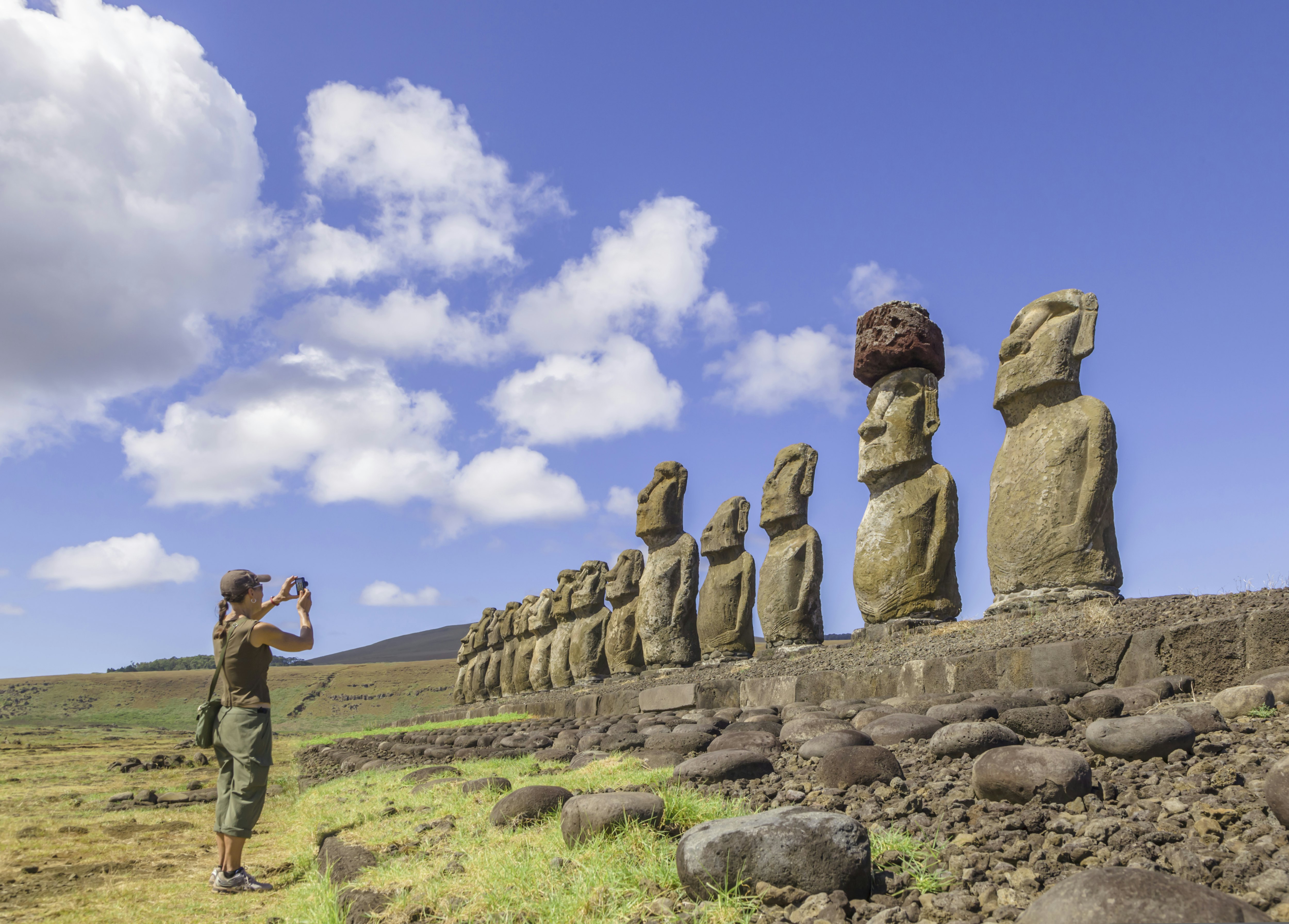
In the south, I went to surf-bashed Pacific beaches, Valle Central wine country, and the lava-spitting volcanoes, hot springs and lush lenga (southern beech) and araucaria (monkey puzzle) forests of Parque Nacional Villarica. I took the Navimag over a great fretwork of fjords from Puerto Montt to Puerto Natales, glimpsing dolphins, whales and albatrosses between bouts of seasickness. I hiked Patagonia’s famous W trek in Torres del Paine, camping next to chinking icebergs, battling gale-force winds and feeling dumbstruck by its god-like canvas of horned peaks, jewel-colored lakes and glaciers. I hung out with Magellanic penguins on the Isla Magdalena near Punta Arenas.
And then, having reached mainland Chile’s tip, I hopped on a plane to remote Rapa Nui (Easter Island) in Polynesia – still technically Chile, despite being 2200 miles (3500km) and a five-plus-hour flight distant. Here, I camped in caves and trekked to deserted beaches and lonely moai, the stone giants that have kept watch over this mystical isle for the past 800 years.
Chilean poet Pablo Neruda once said: “He who does not know the Chilean forests, does not know the planet.” And he was right: nature goes all out here. These landscapes tug at the heartstrings with the gravitational pull of the Sun and Moon.

Argentina delivers world-renowned colors and culture
Luke Waterson has spent months traveling Argentina, from Salta’s multi-colored desert through Buenos Aires’ tango-drenched barrios down to Tierra del Fuego’s moody mountain-edged coast. He is particularly passionate about alfajores (desserts), estancias (cattle ranches) and Buenos Aires’ vintage shops.
Where South America tapers out toward Tierra del Fuego, the southernmost land on the globe before Antarctica, Argentina and Chile are no strangers to friendly rivalry – nor to trumpeting their own virtues while enumerating the other’s faults. The two share the world’s third-longest international land border, after all, at 5300km (3300 miles) – which means intermittent neighborly tensions are to be expected. Indeed, parts of their boundary in Patagonia are still contested; Argentina sided with the USA during the Baltimore crisis that almost brought Chile and the USA to war in the late 19th century; and Chile famously supported the UK in the Falkland Islands dispute. Ironically, however, these geographically complementary countries probably have more in common than any other two on the continent. Which makes choosing between them surprisingly tough.
As I did on my first visit, you may well arrive in this part overland, from Peru to the north, then switch between one and the other as you crisscross the the mighty Andean nevados (snow-caps) that divide the two as you work your way south. Since I’d seen the rest of South America prior to my arrival here, it was the similarities I noticed more than the differences.

Popular backpacker stop San Pedro de Atacama in the northern Chilean desert, for example, has parallels with northern Argentina’s Salta, in terms of a more visible Indigenous presence and wacky arid scenery. Patagonian towns and villages look similar whether you are in Argentina’s portion or Chile’s. And both share several thousand miles’ frontier of astounding peaks, which are beguiling no matter the side from which they’re approached. Nature-wise, you can make an easy case for either country, too (although let’s clarify that South America’s highest summit, Aconcagua, and biggest waterfall, Iguazú Falls, are both in Argentine territory).
So far, then, a high-scoring draw. Sit down at a restaurant table, though, and you’ll soon be in a one-horse race. Think a juicy steak topped with chimichurri sauce (a divine salsa of diced parsley and oregano, oil and chili flakes). Or a provoleta (grilled round of herb-seasoned cheese) followed by an alfajor (cookie sandwiched together with caramel-like dulce de leche). Or a soothing yerba maté (plant-based infusion). Argentine cuisine sates all cravings and sets taste buds watering entire time zones away. Chile’s food and drink scene is comparatively flat by South America’s lofty standards. True, seafood can be nice – as it can anywhere with a coastline – but there is precious little iconically Chilean that anyone outside Chile would travel far to sample.
It is true that both nations have wine regions, and no shortage of fine home-grown whites and reds to quaff with your meal. But while Chile’s wine might have the bigger international market presence, that’s partly because Argentines save lots of the good stuff for themselves: domestic wine consumption in Argentina is significantly higher than in Chile, according to the OIV (International Organisation of Vine and Wine). And since Argentina has its own signature grapes, malbec and torrontés, its wines deliver a distinctive, internationally recognizable taste.

Argentina possesses a color and a cultural depth so intense that these spill way beyond its own borders and across the world. Chile simply can’t compete. Argentina is the land of Che Guevara, Eva Perón, Diego Maradona – names that need no introduction. The vitality of Argentine capital Buenos Aires – its daytime cafe culture through evening parrilla (steakhouse) feasts to all-night-long nightlife – makes Chile’s Santiago seem lackluster. Nothing musically in Chile comes close to Argentina’s sultry tango beats.
And we all know who is more likely to triumph in a football match.











